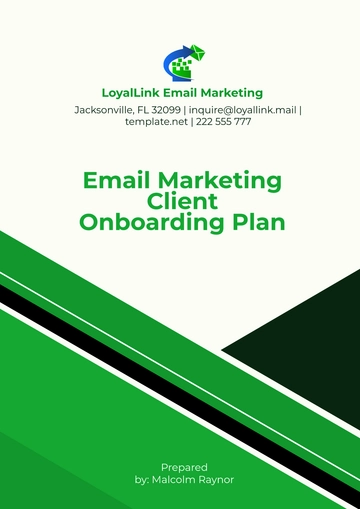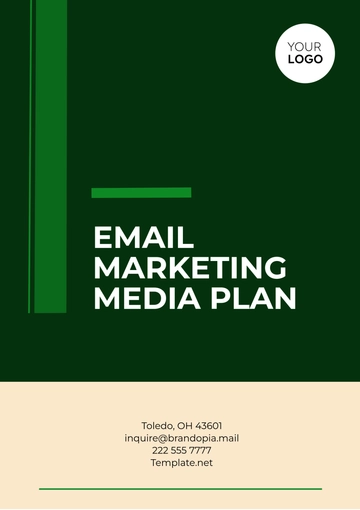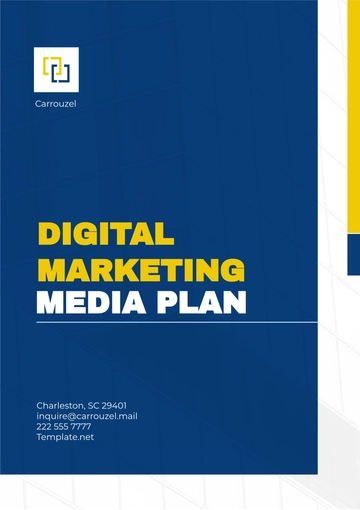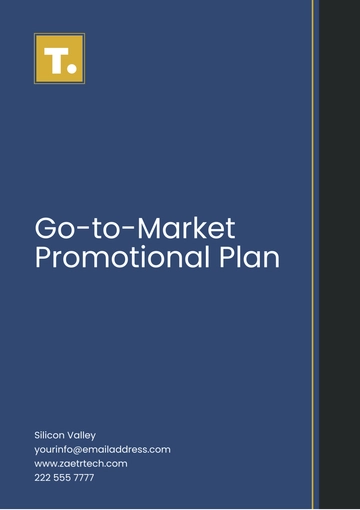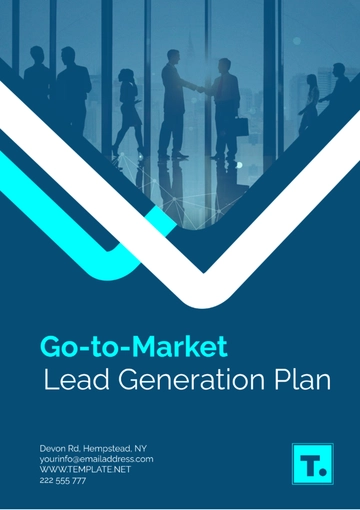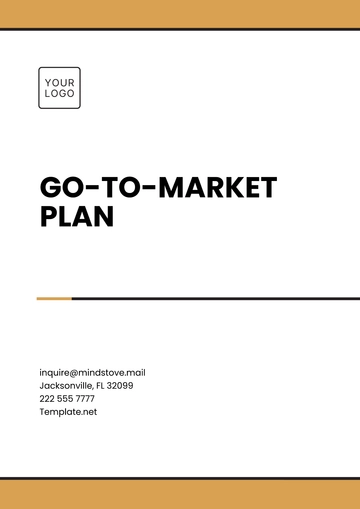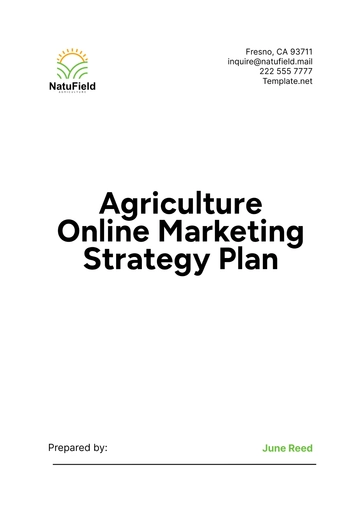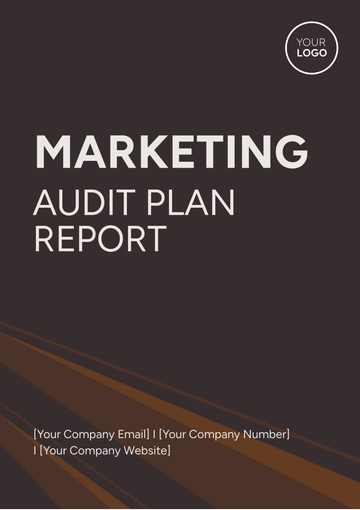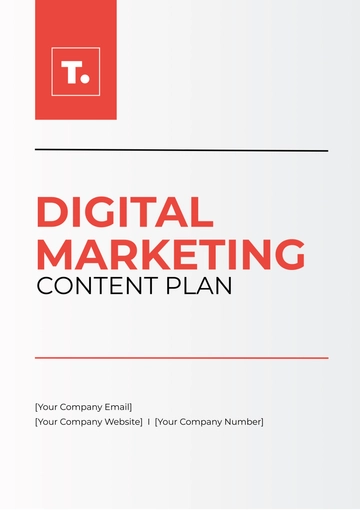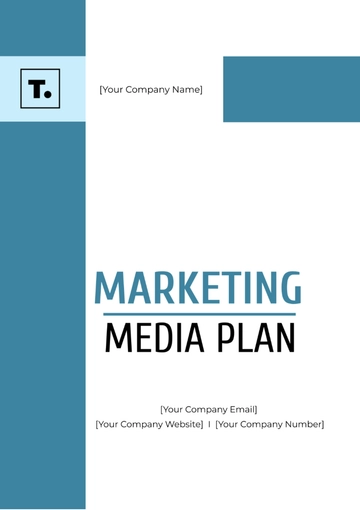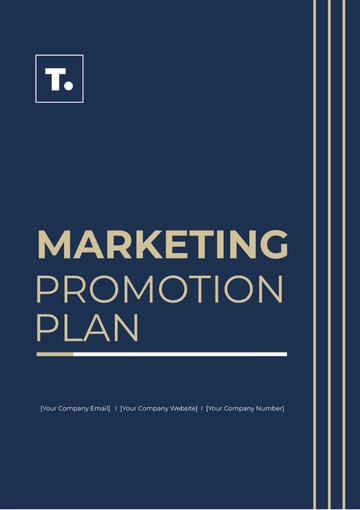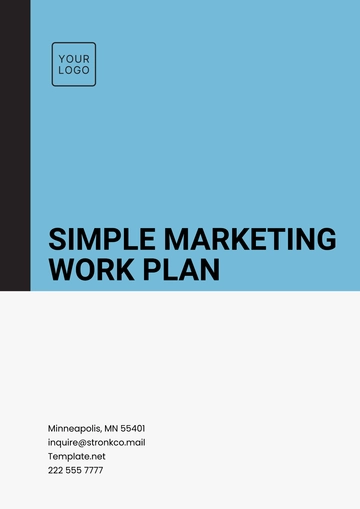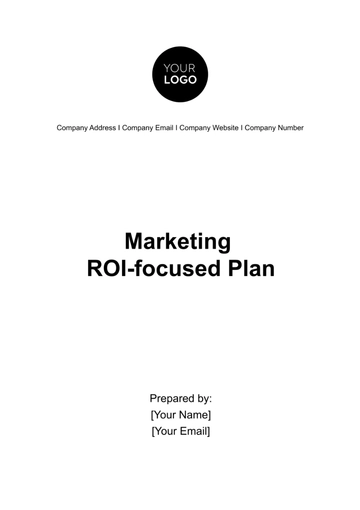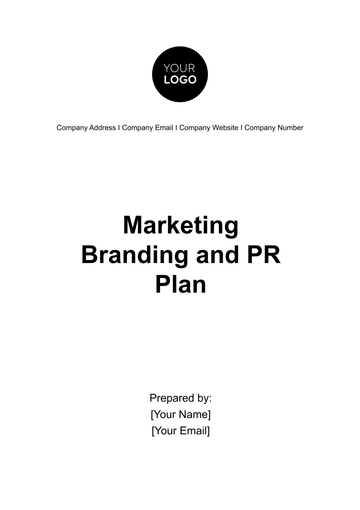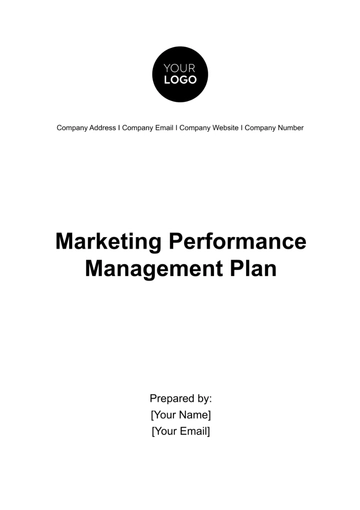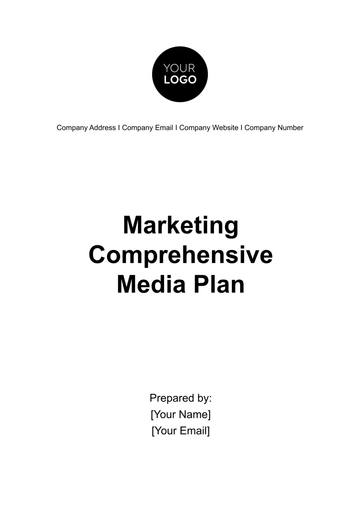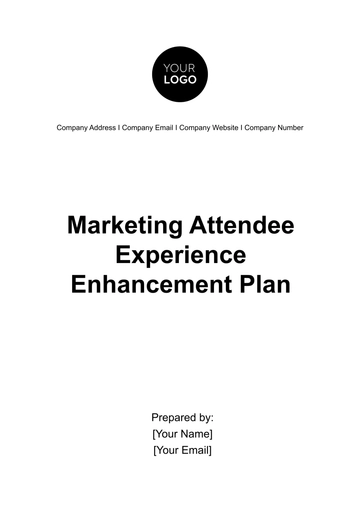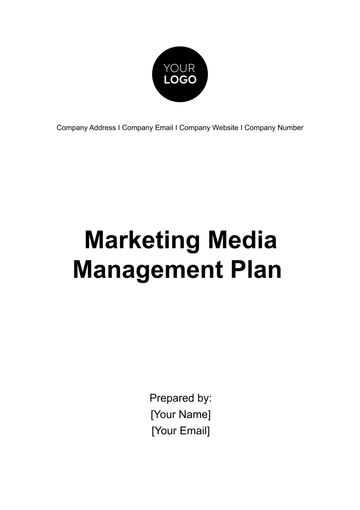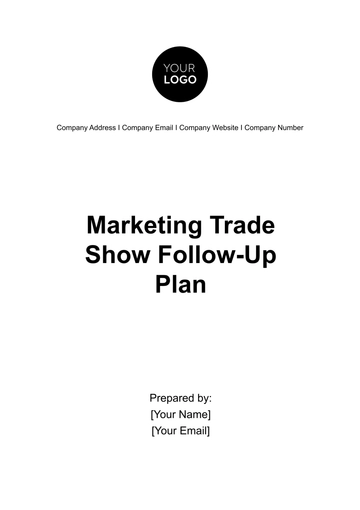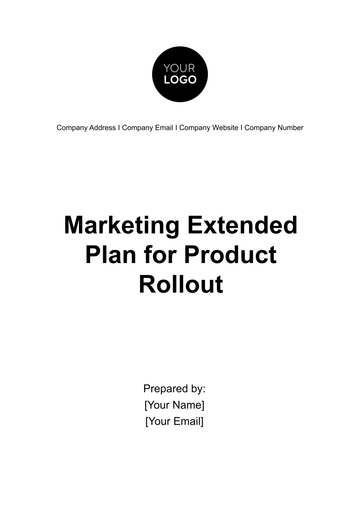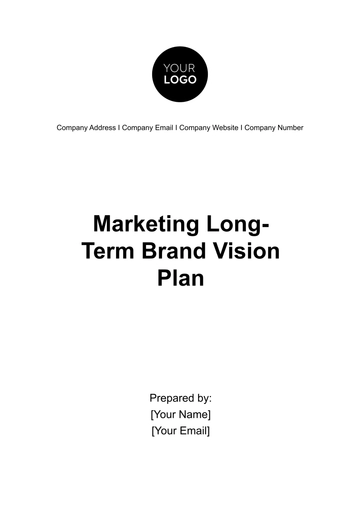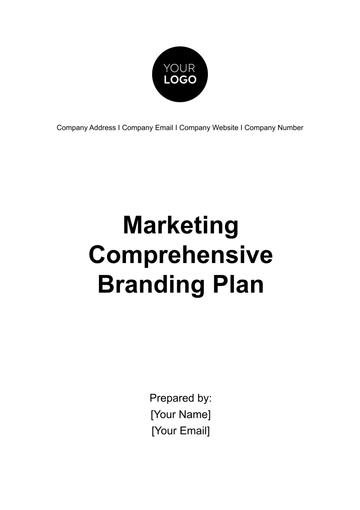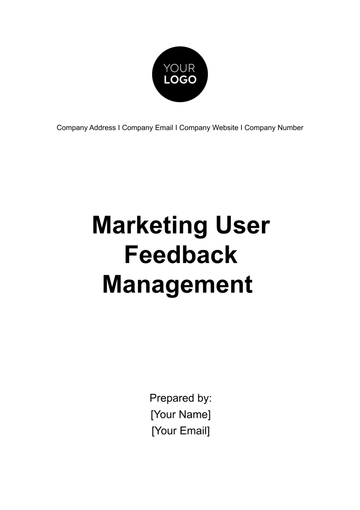Free Go-to-Market Expansion Plan

1. Executive Summary
1.1 Purpose
The purpose of this Go-to-Market (GTM) Expansion Plan is to provide a structured and comprehensive roadmap that will enable [Your Company Name] to successfully penetrate new markets starting from the year 2050 and beyond. With the ever-evolving global market dynamics and increased competition, a detailed strategy is essential for ensuring a smooth entry into these markets. This document will serve as a guide for aligning our internal resources with external opportunities while carefully navigating the challenges presented by competitors and changing consumer preferences. The plan outlines the marketing, sales, operational, and financial strategies necessary for expanding our market presence and achieving long-term sustainability. It includes detailed action steps, projections, and risk management practices that will help us successfully adapt and grow in new territories.
1.2 Goals and Objectives
The primary objectives of this expansion plan include the following:
Increase Market Share: [Your Company Name] will aim to capture [15%] of the market within [3 years] of entering the new market. By securing a foothold early, we intend to establish ourselves as a prominent player and drive competitive advantage.
Revenue Growth: Our financial target for the first year is to generate [$5 million] in revenue, with a compounded annual growth rate (CAGR) of [25%] over the next five years. This rapid growth will be achieved through an aggressive customer acquisition strategy, expansion of product offerings, and partnerships.
Customer Acquisition: We aim to acquire [2,000] new customers within the first [3 years], with [1,000] coming in the first year. Our approach will be centered around targeted marketing campaigns, promotions, and personalized customer experiences.
Brand Recognition: Within [3 years], [Your Company Name] will be recognized as a leading brand in the new market, known for its innovative products, customer service excellence, and sustainability efforts.
These objectives will be achieved through a multi-tiered approach that prioritizes customer satisfaction, operational efficiency, and market competitiveness.
1.3 Overview of the Market Opportunity
The global market environment in 2050 is ripe for growth, with significant technological advancements and evolving consumer behavior driving change across industries. The industry in which [Your Company Name] operates is projected to grow at a CAGR of [30%] over the next decade, representing a key opportunity for expansion. As the global market reaches a value of [$100 billion], emerging economies in particular show increased demand for innovative and sustainable products—areas in which [Your Company Name] excels.
By expanding into this market, we will tap into an underserved customer base eager for innovation, customization, and sustainable product solutions. The increasing importance of digitalization and the rise of e-commerce also present opportunities for direct-to-consumer engagement, allowing [Your Company Name] to bypass traditional barriers to entry in favor of a leaner, more efficient market entry approach.
2. Market Analysis
2.1 Industry Overview
The global industry landscape is undergoing significant transformation. Technological advancements, consumer behavior shifts, and new business models are reshaping how companies operate. By 2050, our target industry is forecasted to grow to [$150 billion], with a [30%] annual growth rate. Key trends driving this growth include:
Innovation in Technology: Breakthroughs in artificial intelligence, automation, and data analytics are enabling companies to create smarter, more efficient products that cater to evolving consumer needs.
Consumer-Driven Demand for Sustainability: Eco-consciousness is at an all-time high. As climate change continues to be a pressing global issue, consumers are increasingly demanding products that are sustainable and environmentally friendly.
Digital Transformation: The continued integration of digital technologies in everyday life is pushing businesses to adopt e-commerce models, embrace automation, and personalize their customer experiences.
These trends are expected to shape the competitive landscape and will provide [Your Company Name] with opportunities to differentiate through innovation and sustainability.
2.2 Target Market Segmentation
To maximize our market penetration, we will segment our target audience into specific categories based on their unique behaviors, preferences, and purchasing power. Our target segments include:
Segment | Description | Market Size (Estimated) |
|---|---|---|
Millennials | Tech-savvy consumers aged [25-40] who prioritize innovation | [10 million] |
Gen Z | Young consumers aged [18-24] with a focus on digital experiences | [8 million] |
Small to Medium Enterprises (SMEs) | Businesses seeking cost-effective, innovative solutions | [5 million] |
Eco-Conscious Consumers | Consumers prioritizing sustainability and green solutions | [6 million] |
Each segment presents a unique opportunity to tailor our offerings and marketing efforts. For example, Millennials and Gen Z audiences value seamless digital experiences, whereas eco-conscious consumers prioritize environmentally friendly products.
2.3 Competitive Landscape
The industry we are entering is highly competitive, with several established players holding significant market shares. However, many of these competitors lack the innovation and sustainability focus that [Your Company Name] can offer. Our key competitors include:
Competitor A: A market leader with a [20%] share, known for premium products but criticized for high prices.
Competitor B: Controls [15%] of the market and emphasizes customer service but lacks innovation.
Competitor C: A new entrant with [5%] market share, leveraging online channels with aggressive pricing.
These competitors are well-established, but they also present gaps and opportunities that [Your Company Name] can exploit by emphasizing innovation, customer satisfaction, and sustainability.
2.4 Market Trends and Insights
Several market trends are expected to drive consumer preferences and industry shifts in 2050 and beyond:
Demand for Personalization: Consumers are seeking products tailored to their unique preferences and needs. This trend allows companies like [Your Company Name] to offer customizable products and services that stand out.
Growth of E-commerce: Online shopping continues to outpace traditional retail, with a projected growth rate of [40%] over the next five years. Establishing a strong e-commerce platform will be critical to our success.
Health and Wellness Prioritization: Consumers are increasingly choosing products that promote their well-being. Products that align with this trend will see increased demand, providing opportunities for innovation in this area.
Aligning our business strategy with these trends will be crucial for driving long-term success in this new market.
3. Value Proposition
3.1 Unique Selling Proposition (USP)
The unique selling proposition (USP) of [Your Company Name] is rooted in its commitment to innovation, sustainability, and customer-centricity. By continuously investing in research and development, we are able to provide cutting-edge products that meet the demands of modern consumers. Our commitment to sustainability sets us apart, appealing to the growing segment of environmentally conscious buyers. Additionally, our focus on customer satisfaction, from pre-purchase to post-purchase support, ensures that we build strong, long-lasting relationships with our clients.
3.2 Customer Pain Points
Through market research, we have identified the following key pain points affecting our target customers:
Lack of Innovation: Many customers are frustrated by the lack of innovation in the products they currently use. They are seeking new solutions that solve problems more efficiently or offer better experiences.
High Costs: Consumers often struggle to find products that deliver value for money, particularly in a competitive market where premium products come at a higher cost.
Inadequate Support: Customers frequently complain about poor customer service from existing providers, which affects their overall experience and satisfaction.
By addressing these pain points, [Your Company Name] will have a clear advantage in positioning itself as a brand that solves real customer problems with innovative, cost-effective, and supported solutions.
3.3 Key Benefits
The key benefits of choosing [Your Company Name] over competitors include:
Cutting-Edge Products: Our continuous investment in research and development ensures that we are always on the forefront of innovation, delivering top-tier products to our customers.
Affordability: By optimizing our operational efficiency and supply chain, we can offer premium products at competitive prices.
Sustainability: Our commitment to eco-friendly practices allows us to cater to the rising demand for sustainable products, which is becoming increasingly important in consumer decision-making.
Superior Customer Service: From the point of sale to after-sales support, our team is dedicated to providing a seamless, supportive customer experience.
Together, these benefits create a compelling value proposition that will resonate with our target market.
4. Go-to-Market Strategy
4.1 Marketing Strategy
Our marketing strategy will be designed to capture attention, generate leads, and drive conversions across multiple platforms. Key components of the strategy include:
4.1.1 Branding
Establishing a strong, recognizable brand identity is a key priority for [Your Company Name] in the new market. Our brand will emphasize:
Innovation: Consistently introducing new, cutting-edge products that solve real problems.
Sustainability: Positioning our company as a leader in sustainable practices to attract eco-conscious consumers.
Customer-Centric Approach: Highlighting our focus on delivering excellent customer service and tailored experiences.
Our branding efforts will include both digital and physical elements, from an optimized website to eco-friendly packaging and point-of-sale materials.
4.1.2 Digital Marketing
In 2050, digital marketing will remain one of the most effective ways to reach a broad audience. Our digital marketing strategy will focus on:
Search Engine Optimization (SEO): Enhancing our website’s search ranking to drive organic traffic.
Social Media Marketing: Engaging customers on platforms like Facebook, Instagram, and Tiktok through targeted advertising, influencer partnerships, and community engagement.
Email Marketing: Building a robust email list to engage with potential customers through personalized messaging, offers, and content.
Pay-Per-Click (PPC) Advertising: Utilizing paid search and display ads to drive traffic and conversions quickly.
4.1.3 Content Marketing
Content marketing will play a central role in establishing [Your Company Name] as a thought leader in our industry. Our content will include:
Educational Blogs and Articles: Covering industry trends, product features, and use cases.
Video Content: Creating informative and engaging video content showcasing product demonstrations, customer testimonials, and behind-the-scenes insights.
Webinars and Virtual Events: Hosting virtual events to educate potential customers, build trust, and demonstrate thought leadership.
Through these efforts, we will provide valuable, engaging content that attracts and nurtures leads, building credibility with our audience.
4.2 Sales Strategy
Our sales strategy will complement the marketing efforts, with a clear focus on closing deals and maximizing customer retention.
4.2.1 Sales Channels
We will implement a multi-channel sales approach to ensure that we can reach our target audience effectively. Our primary sales channels include:
Channel | Description | Expected Contribution to Revenue |
|---|---|---|
Direct Sales | In-house sales team focused on building relationships with enterprise clients | [30%] |
E-Commerce | Our online platform will target direct-to-consumer sales, allowing for seamless transactions across global markets | [50%] |
Retail Partnerships | Partnerships with large retailers will expand our distribution network and enable us to reach customers offline | [20%] |
This approach will allow us to maximize our reach and offer customers multiple ways to purchase our products.
4.2.2 Sales Process
The sales process will be carefully designed to streamline customer acquisition and ensure a smooth journey from lead generation to final sale. The steps in the sales process are:
Lead Generation: Leads will be acquired through marketing efforts such as digital advertising, content marketing, and partnerships.
Qualification: The sales team will assess each lead's suitability based on their needs and purchasing potential.
Demonstration: Tailored product demonstrations will be provided to qualified leads, emphasizing the unique benefits and features of our products.
Negotiation and Closing: Sales personnel will work closely with the lead to address any concerns, finalize details, and close the sale.
Follow-Up and Support: Post-sale, the sales team will maintain close contact with customers, offering support and identifying opportunities for upselling or cross-selling.
This structured approach will ensure that leads are converted into paying customers efficiently and with high levels of satisfaction.
4.3 Partnership Strategy
Strategic partnerships will be critical to expanding our market presence, particularly in regions where we may lack an established presence. We will focus on two primary types of partnerships:
Technology Partnerships: Collaborating with technology providers to enhance our product offerings. By integrating cutting-edge tech into our products, we can offer superior value to our customers and differentiate ourselves from competitors.
Distribution Partnerships: Partnering with established distributors and wholesalers will help us leverage existing supply chains and customer networks, speeding up our market entry.
These partnerships will not only increase our reach but also bolster our credibility within the market, as we align with respected and well-known industry players.
5. Operational Plan
5.1 Product Development
Product development is a core component of our expansion plan. As we enter new markets, we will continue to prioritize innovation and sustainability to stay ahead of the competition. Our key initiatives include:
Increased R&D Investment: [Your Company Name] will allocate [15%] of annual revenue to research and development to ensure that our products are always evolving in line with customer needs and technological advancements.
Sustainable Manufacturing: We will implement eco-friendly manufacturing processes that minimize waste, reduce our carbon footprint, and align with the sustainability priorities of our target audience.
By focusing on continuous improvement and innovation, we will deliver products that consistently exceed customer expectations.
5.2 Customer Support
Providing excellent customer support is critical to ensuring customer loyalty and satisfaction. Our customer support strategy will focus on:
Multi-Channel Support: We will offer support across multiple platforms, including phone, email, live chat, and social media. This approach ensures that customers can easily access help when they need it, no matter their preferred communication method.
Comprehensive Knowledge Base: Our online knowledge base will provide customers with self-service options, allowing them to troubleshoot issues or find answers to common questions on their own.
Proactive Engagement: Our support team will engage with customers proactively to identify and resolve potential issues before they escalate, ensuring a smooth customer experience.
By providing exceptional support, we aim to build long-term relationships with our customers and encourage repeat business.
5.3 Logistics and Supply Chain
An efficient logistics and supply chain is essential for delivering products on time and maintaining customer satisfaction. Our logistics strategy will include:
Supplier Relationships: Building strong relationships with reliable suppliers to ensure a consistent supply of high-quality materials.
Inventory Management: Utilizing advanced inventory management systems to maintain optimal stock levels, reduce carrying costs, and minimize stockouts.
Sustainable Logistics: We will work with logistics partners who prioritize sustainability, reducing the environmental impact of our supply chain.
By streamlining our logistics and supply chain, we can ensure that our products are delivered on time and at a lower cost, helping us maintain competitive pricing.
6. Financial Projections
6.1 Revenue Model
Our revenue model will focus on multiple streams, enabling us to diversify our income sources and mitigate risks. These streams include:
Product Sales: Direct sales of our core products to consumers and businesses.
Subscription Services: Offering subscription-based services for ongoing product support and maintenance, creating a recurring revenue stream.
Partnership Revenues: Earning revenue from partnerships, including technology collaborations and distribution deals.
6.2 Budget and Resource Allocation
We have allocated the following budget for the first year of expansion:
Category | Estimated Budget |
|---|---|
Marketing | [$1 million] |
Product Development | [$750,000] |
Operations | [$500,000] |
Customer Support | [$250,000] |
Total | [$2.5 million] |
This budget will ensure that we have the resources necessary to drive our marketing efforts, develop new products, and maintain operational efficiency.
6.3 Financial Forecasts
We project strong growth over the next five years, with increasing revenue and profitability each year. Our financial forecast is as follows:
Year | Revenue | Expenses | Profit |
|---|---|---|---|
Year 1 | [$5 million] | [$2 million] | [$3 million] |
Year 2 | [$6.25 million] | [$2.5 million] | [$3.75 million] |
Year 3 | [$7.81 million] | [$3 million] | [$4.81 million] |
Year 4 | [$9.76 million] | [$3.75 million] | [$6.01 million] |
Year 5 | [$12.2 million] | [$4.5 million] | [$7.7 million] |
These projections indicate that we are on track to achieve our financial goals, with a strong return on investment over the next five years.
7. Risk Assessment and Mitigation
7.1 Market Risks
One of the key risks in entering a new market is potential volatility in consumer demand. To mitigate this risk, we will:
Diversify Offerings: By offering a range of products, we can appeal to different customer segments and reduce reliance on any single product.
Adapt to Market Trends: We will monitor market trends closely and adjust our product and marketing strategies accordingly.
7.2 Operational Risks
Operational risks include supply chain disruptions, manufacturing issues, and customer support challenges. To mitigate these risks, we will:
Build a Resilient Supply Chain: Establish relationships with multiple suppliers to avoid over-reliance on any single partner.
Invest in Technology: Utilize advanced technologies to streamline operations and minimize the risk of delays or errors.
7.3 Financial Risks
Financial risks include overspending and not achieving our revenue targets. To mitigate these risks, we will:
Implement Cost Controls: Regularly review our expenses to ensure we stay within budget.
Focus on Customer Acquisition: Invest heavily in customer acquisition to ensure that we hit our revenue targets.
8. Implementation Timeline
8.1 Phases of Implementation
We will implement our go-to-market strategy in the following phases:
Phase 1 (Months 1-6): Market research, product development, and marketing campaigns.
Phase 2 (Months 7-12): Launch in select markets, with a focus on customer acquisition and building brand recognition.
Phase 3 (Months 12-24): Expand to additional markets, optimize operations, and drive profitability.
8.2 Key Milestones
Our key milestones for the first two years include:
Month 3: Finalize product development and marketing plan.
Month 6: Launch in the first market.
Month 12: Reach [$5 million] in revenue and acquire [1,000] customers.
Month 24: Expand to additional markets and reach [$7.81 million] in revenue.
8.3 Resource Requirements
We will require the following resources to implement our plan:
Personnel: A marketing team of [10], a sales team of [5], and a customer support team of [10].
Technology: Investments in e-commerce platforms, CRM software, and inventory management systems.
- 100% Customizable, free editor
- Access 1 Million+ Templates, photo’s & graphics
- Download or share as a template
- Click and replace photos, graphics, text, backgrounds
- Resize, crop, AI write & more
- Access advanced editor
Plan for growth with the Go-to-Market Expansion Plan Template from Template.net. This editable and customizable template assists you in strategizing for market entry, new product launches, or geographical expansion. Use our Ai Editor Tool to adapt it for your specific growth objectives and ensure a successful market expansion.
You may also like
- Finance Plan
- Construction Plan
- Sales Plan
- Development Plan
- Career Plan
- Budget Plan
- HR Plan
- Education Plan
- Transition Plan
- Work Plan
- Training Plan
- Communication Plan
- Operation Plan
- Health And Safety Plan
- Strategy Plan
- Professional Development Plan
- Advertising Plan
- Risk Management Plan
- Restaurant Plan
- School Plan
- Nursing Home Patient Care Plan
- Nursing Care Plan
- Plan Event
- Startup Plan
- Social Media Plan
- Staffing Plan
- Annual Plan
- Content Plan
- Payment Plan
- Implementation Plan
- Hotel Plan
- Workout Plan
- Accounting Plan
- Campaign Plan
- Essay Plan
- 30 60 90 Day Plan
- Research Plan
- Recruitment Plan
- 90 Day Plan
- Quarterly Plan
- Emergency Plan
- 5 Year Plan
- Gym Plan
- Personal Plan
- IT and Software Plan
- Treatment Plan
- Real Estate Plan
- Law Firm Plan
- Healthcare Plan
- Improvement Plan
- Media Plan
- 5 Year Business Plan
- Learning Plan
- Marketing Campaign Plan
- Travel Agency Plan
- Cleaning Services Plan
- Interior Design Plan
- Performance Plan
- PR Plan
- Birth Plan
- Life Plan
- SEO Plan
- Disaster Recovery Plan
- Continuity Plan
- Launch Plan
- Legal Plan
- Behavior Plan
- Performance Improvement Plan
- Salon Plan
- Security Plan
- Security Management Plan
- Employee Development Plan
- Quality Plan
- Service Improvement Plan
- Growth Plan
- Incident Response Plan
- Basketball Plan
- Emergency Action Plan
- Product Launch Plan
- Spa Plan
- Employee Training Plan
- Data Analysis Plan
- Employee Action Plan
- Territory Plan
- Audit Plan
- Classroom Plan
- Activity Plan
- Parenting Plan
- Care Plan
- Project Execution Plan
- Exercise Plan
- Internship Plan
- Software Development Plan
- Continuous Improvement Plan
- Leave Plan
- 90 Day Sales Plan
- Advertising Agency Plan
- Employee Transition Plan
- Smart Action Plan
- Workplace Safety Plan
- Behavior Change Plan
- Contingency Plan
- Continuity of Operations Plan
- Health Plan
- Quality Control Plan
- Self Plan
- Sports Development Plan
- Change Management Plan
- Ecommerce Plan
- Personal Financial Plan
- Process Improvement Plan
- 30-60-90 Day Sales Plan
- Crisis Management Plan
- Engagement Plan
- Execution Plan
- Pandemic Plan
- Quality Assurance Plan
- Service Continuity Plan
- Agile Project Plan
- Fundraising Plan
- Job Transition Plan
- Asset Maintenance Plan
- Maintenance Plan
- Software Test Plan
- Staff Training and Development Plan
- 3 Year Plan
- Brand Activation Plan
- Release Plan
- Resource Plan
- Risk Mitigation Plan
- Teacher Plan
- 30 60 90 Day Plan for New Manager
- Food Safety Plan
- Food Truck Plan
- Hiring Plan
- Quality Management Plan
- Wellness Plan
- Behavior Intervention Plan
- Bonus Plan
- Investment Plan
- Maternity Leave Plan
- Pandemic Response Plan
- Succession Planning
- Coaching Plan
- Configuration Management Plan
- Remote Work Plan
- Self Care Plan
- Teaching Plan
- 100-Day Plan
- HACCP Plan
- Student Plan
- Sustainability Plan
- 30 60 90 Day Plan for Interview
- Access Plan
- Site Specific Safety Plan
